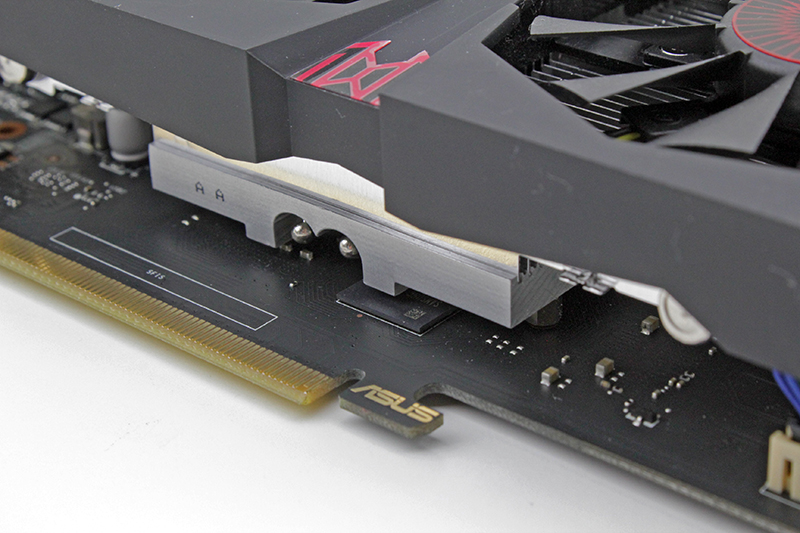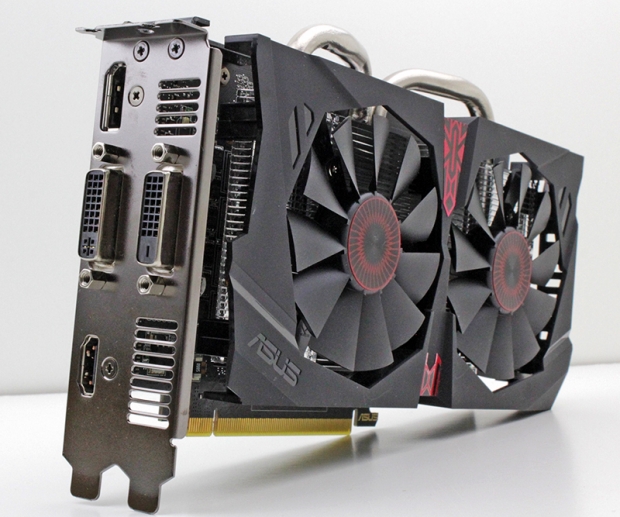Index
A closer look at ASUS Strix
The dual-slot Strix cooler with DIRECTCU II looks like it should have no trouble keeping the temperatures and noise emissions in check despite a factory overclock.
The GTX 950 Strix comes with 141MHz GPU overclock, but the GM206 GPU is small chip and it has only 90W TDP. And yes, the Strix cooler has cooling capability of up to 175W. The PCB measures 210mm in length while the card with the cooler is 220mm.
We’re talking about a dual-slot cooler with two 7.5cm fans on top. ASUS took an open shroud approach, where fans are positioned on top and blow directly at the heatsink. This means that hot air will not be vented from the chassis. Satisfactory airflow ensures the best possible cooling, but it’s nothing that a few quality intake and outtake fans won’t effectively nullify.
All the juice the card needs can be supplied via the PCIe connector (up to 75W) and a single 6-pin power connector (up to 75W). The reference design sets TDP at 90W. Removing power cable from the header is easy thanks to the cut-out in the PCB, and the fact that the header is placed reversed.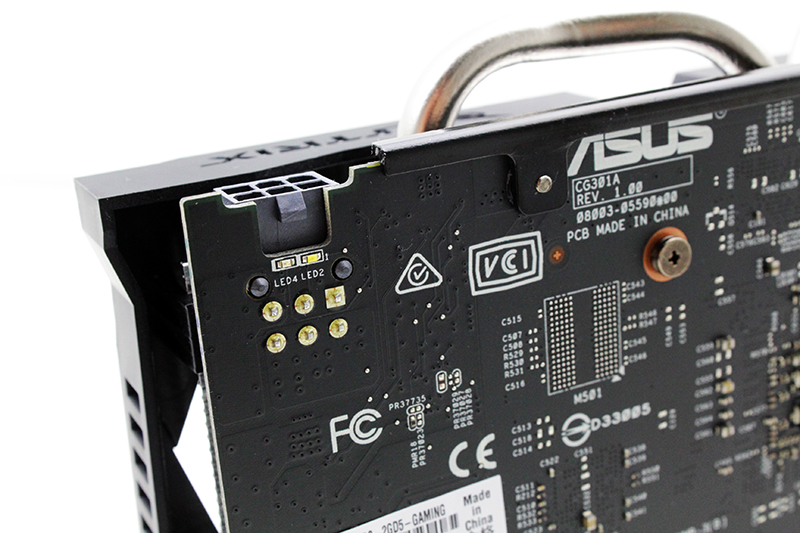
An LED light that will warn you if you forget to use a 6-pin power connector. After the cable is connected the light changes from red to white.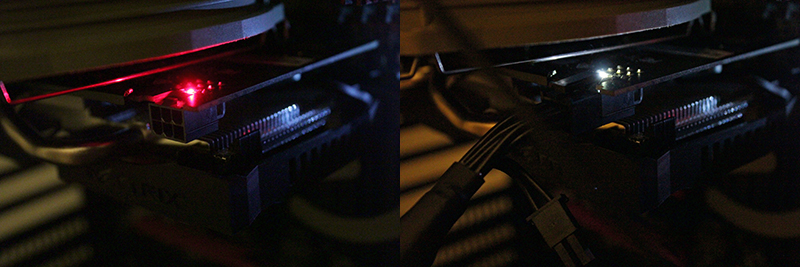
While it is not a high-end product, Nvidia still enabled SLI support on the GTX 950. With the GTX 750 Ti and GTX 650 Ti SLI this was impossible but it was supported on the GTX 650 Ti boost.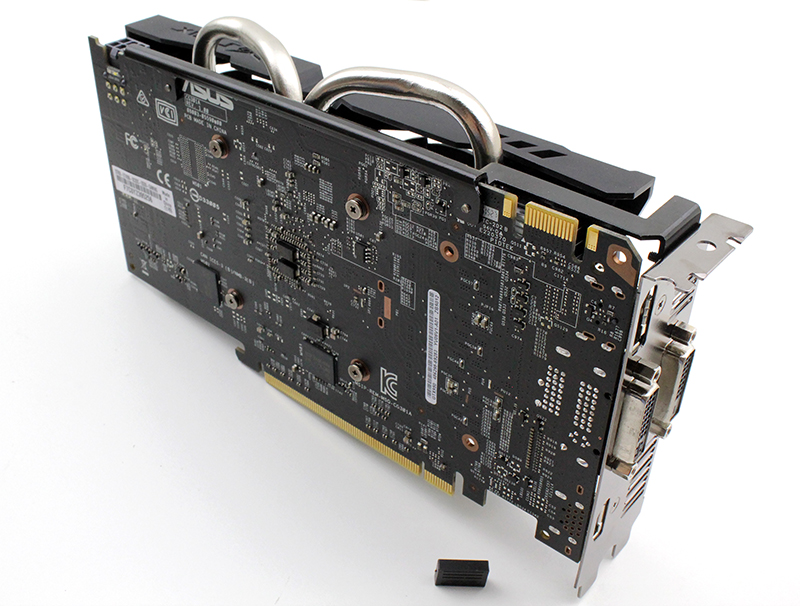
The GTX 950’s display engine supports up to four simultaneous displays at up to 5K (5120x3200) resolution or five physical displays in total.
Display outputs include dual-link DVI, HDMI and DisplayPort connectors, with the number varying depending on Nvidia board partners. ASUS GTX 950 Strix OC comes with two dual-link DVIs, one HDMI and one DisplayPort connector.
With support for HDMI 2.0, the Geforce GTX 950 can playback 4K content at 60 fps and it natively supports H.265 (HEVC) encode and decode in hardware.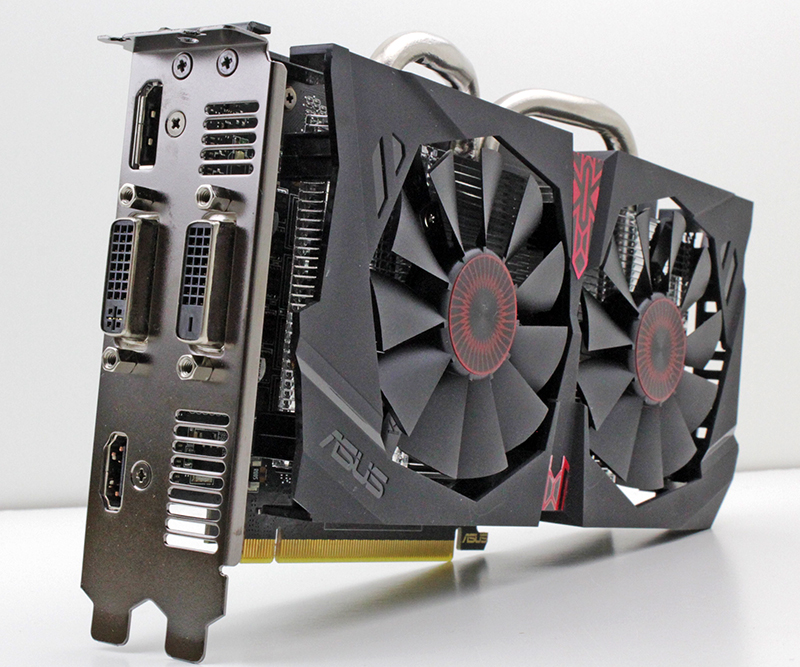
The card has 2GB of GDDR5 memory, courtesy of Samsung. The chip designation is K4G41325FC-HC28. Two of four memory modules are placed on the back side of the PCB. The same memory chips are used on some GTX 970 and GTX 960 cards. They are specified to run at 1750 MHz (7000 MHz GDDR5 effective) but Nvidia lowered the clock to 1650MHz for the GTX 950.
The cooler on the GTX 950 Strix OC only deals with heat dissipation from the GPU, while memory and power components are cooled indirectly by airflow.
The whole cooler is held only by four screws in vicinity of the GPU but there are no vibrations or signs of instability. Next image shows the GTX 950 Strix OC card with the cooler removed.
Strix cooler is relatively heavy for the small PCB and to ensure stability ASUS implemented one metal bar along the top edge to stabilize the card.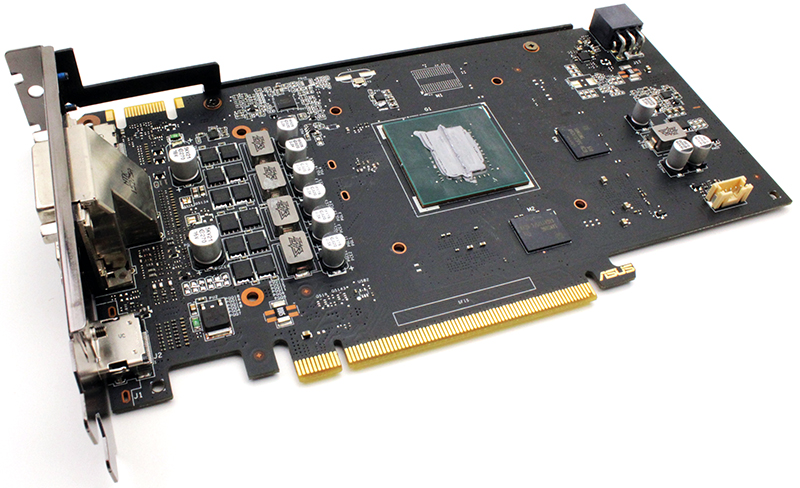
Strix cooler does not come with a copper base. Instead it uses so called DirectCU II thermal design. This is a direct-GPU contact with heatpipes. This way a copper heatpipes transfer heat faster from the GPU to the heatsink. According to ASUS internal testing, the DIRECTCU II offer 20 per cent better cooling and the card is three times quieter compared to the Nvidia reference design.